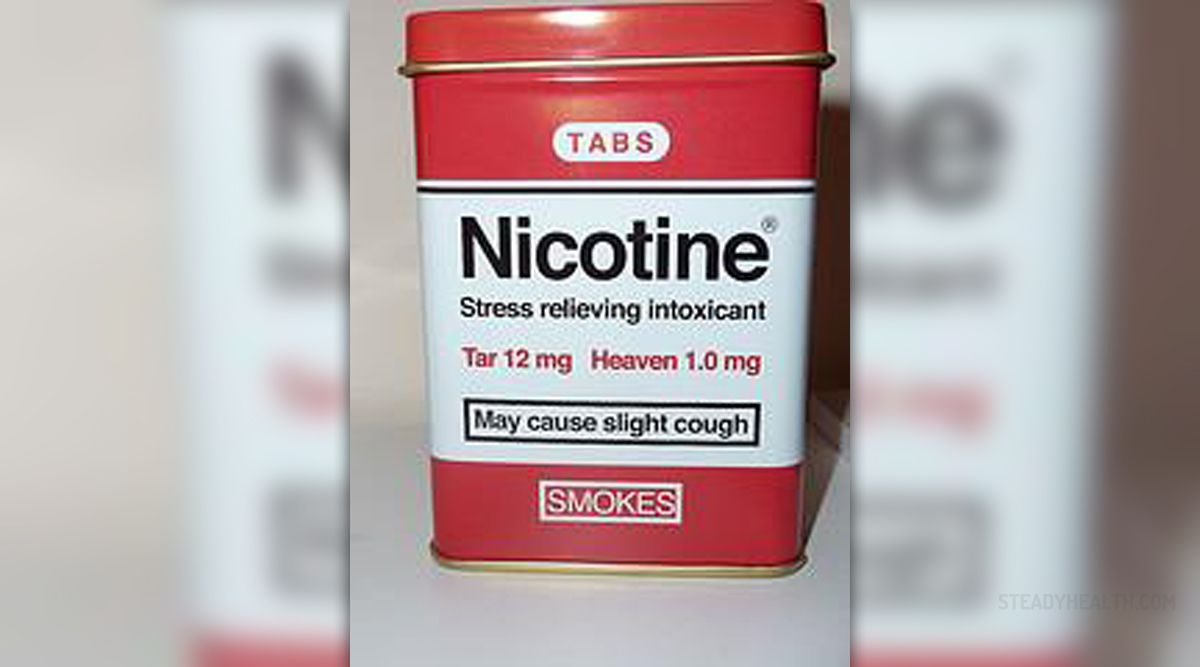
Facts about Nicotine
Nicotine is a highly addictive type of drug which iscontained in tobacco and all tobacco products. According to some scientificstudies it can be considered equally addictive as cocaine and heroin. The humanbody absorbs this toxin very quickly, and its effect wears off only after a fewhours when the person feels a craving for more nicotine. Nicotine gets to thebrain much faster than any other type of drug. It is very efficient inarousing the adrenal glands and helping the body release dopamine in certainportions of the brain which are in charge of controlling the pleasure.Adrenaline which gets pumped from the adrenal gland makes a person experience arush of excitements while the raised levels of dopamine in the brain lead tothe craving and the pleasurable sensations which are so often associated with nicotine.
If a person does not get the regular dose of nicotine, he or she commonly startsto experience the symptoms of nicotine withdrawal and these include difficulty inconcentration, a drop in the pulse rate, a drop in blood pressure, aggression,anger, increased appetite, depression and fatigue. It is mainly due to thesesymptoms why smokers find it hard to quit smoking and face withdrawal problems. Besides these obviousphysical problems associated with sudden cessation of nicotine consumption, smokers also tend toexperience a series of emotional effects as well. A smoker cannot stop smokingin a crowd, feels that he or she always needs to do something with his or herhands, needs to have a cigarette in certain situations or certain times of theday and so on. All of those elements combined together lead to a very firmhabit which is very hard to break.
Statistics
According to certain statistics, tobacco products are theleading health problem in the United States. 2 million Americans use pipes, 7.1million Americans chew tobacco, 9.7 million Americans smoke cigars whilethere are more than 52 million American citizens who smoke cigarettes. Mostsmokers have their first cigarette around the age of 13. Each new day bringsalong 6,000 new smokers in the United States, and at least half of them getaddicted immediately. The tobacco industry spends millions of dollars each yearon advertising campaigns which are designed to make teenagers believe thatsmoking will make them appear cooler. 40 percent of active smokers have triedquitting but they did not succeed in getting rid of this dreadful habit.
Youth Tobacco Use
It is a devastating fact that there are 3,450 teenagers inthe United States smoking their first cigarette each day. There are 17.2 highschool students who are active smokers, out of which there are 15 percentfemale students and 20 percent of male high school students. As far as racialdifferences are concerned, there are 19 percent of white students, 19 percent of Hispanicstudents, 10 percent of Asian students, 7 percent of African-American studentswho are smokers.
As for middleschool smokers, there are 5 percent female students and 6 percent malestudents. Another terrifying fact is that there are 11 percent of high schoolstudents and even 4 percent of middle school students who indulge in cigarsmoking. There are also 2 percent of high school bidi smokers and 2 percent ofmiddle school bidi smokers as well. 7 percent of high school students and 3percent of middle school students also used smokeless tobacco.
Short and Long Term Effects of Tobacco
Short term effects of tobacco are not that serious but theyare still not a pretty sight to behold as they include reeking homes, smellyfurniture, smelly cars, smelly clothes, stained fingers, stained teeth, brownteeth, yellow teeth and bad breath.
Those who chew on tobacco commonly sufferfrom various dental problems such as receding gums, tooth decay, mouth soresand sometimes even certain types of cancer.
Another big problem with tobaccoproducts is that they require excessive amounts of money. A typical smokerspends thousands of dollars to feed his or her filthy habit.
Long term effectsof tobacco are numerous but the most common ones include chronic cough,weakened immune system, wrinkled skin, impotence, various complications duringpregnancy, miscarriages, decreased levels of physical activity, cirrhosis ofthe liver, stomach ulcers, duodenal ulcers, chronic lung diseases, cancer ofthe esophagus, cancer of the vertebrae, cancer of the bladder, cancer of thelarynx, cancer of the lungs, cancer of the mouth, osteoporosis, emphysema andheart disease, stroke.
Smokers also pollute the space around them and thesecond hand smoke from the cigarettes may cause asthma, pneumonia andbronchitis in passive smokers.
Cigarettes contain many harmful substances amongwhich are vinyl chloride, urethane, toluene, tar, hydrogen cyanide, hexamine,cadmium, butane, acetone, ammonia, carbon monoxide, arsenic and formaldehyde. Many of these are confirmed cancerogens which if inhaled on a regular basis eventually trigger certain malignant tumors.

















Your thoughts on this
Loading...